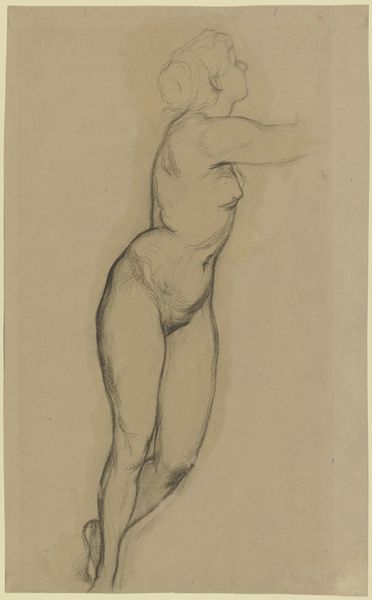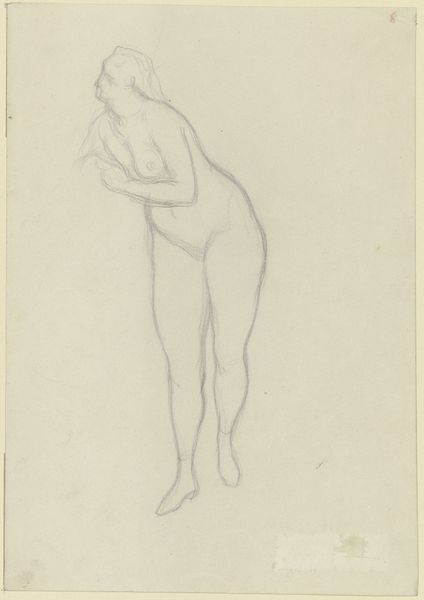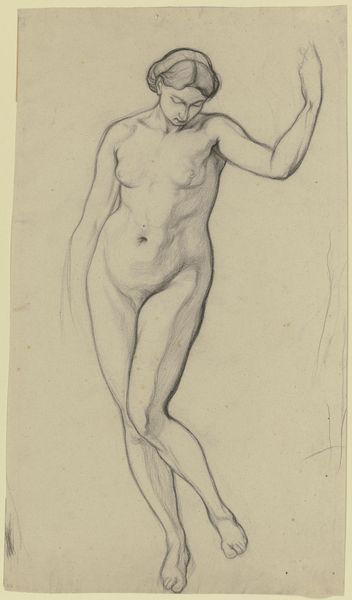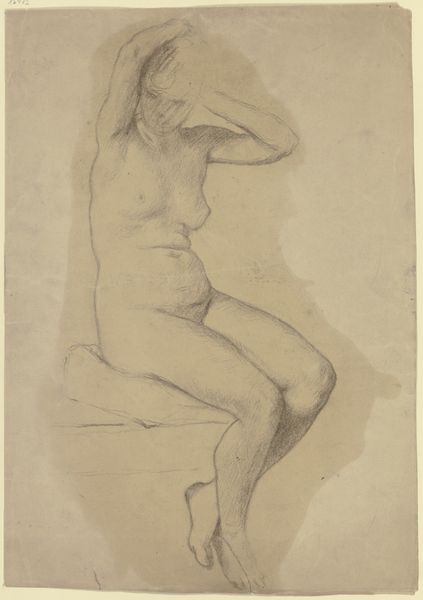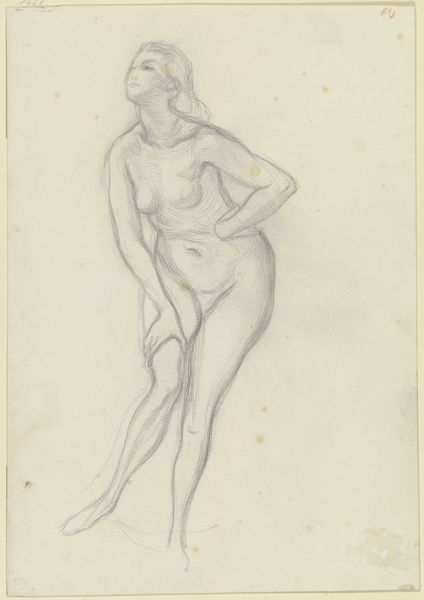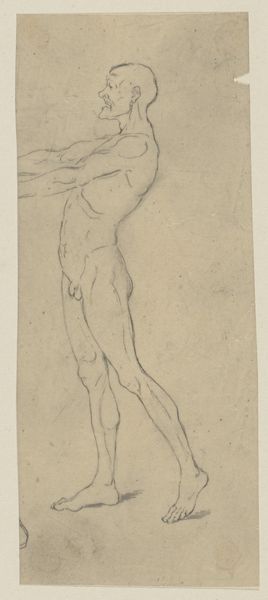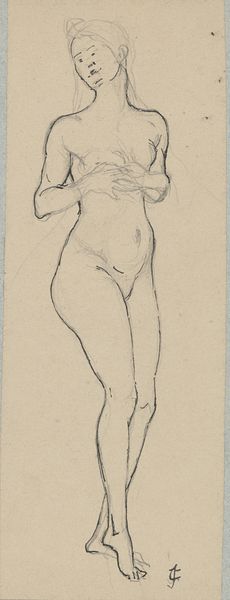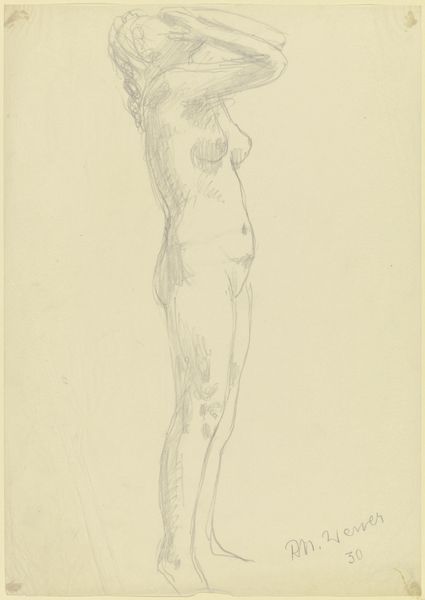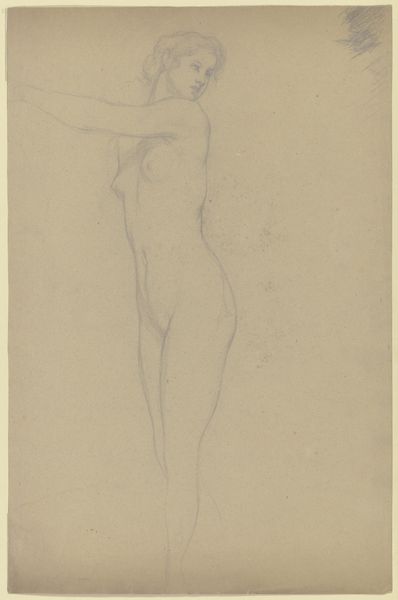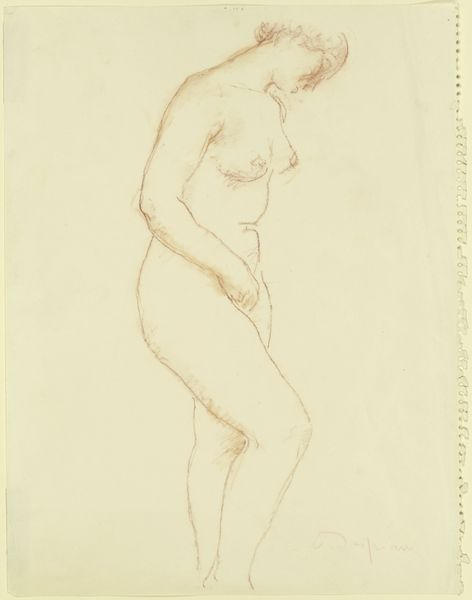
Weiblicher Akt, kniend nach links, halb rücklings gesehen, der linke Arm rückwärts ausgestreckt
0:00
0:00
drawing, paper, chalk
#
drawing
#
amateur sketch
#
toned paper
#
light pencil work
#
16_19th-century
#
shading to add clarity
#
pencil sketch
#
incomplete sketchy
#
paper
#
german
#
ink drawing experimentation
#
chalk
#
sketchbook drawing
#
portrait drawing
#
initial sketch
Copyright: Public Domain
Editor: Here we have Victor Müller’s drawing, "Female Nude, Kneeling to the Left, Seen Half from the Back, the Left Arm Extended Backwards". It's undated, created with chalk and pencil on paper. The figure feels caught between worlds, suspended in motion. How should we interpret the gaze of this woman, looking back, almost defiant? Curator: Precisely! It's essential to acknowledge how the portrayal of the female nude intersects with power dynamics. While seemingly traditional, what could it mean to see a woman kneeling but gazing away, seemingly escaping the male gaze rather than offering herself to it? Who is she looking towards? Whose perspective are we invited to take? Perhaps Müller’s study subtly critiques the objectification inherent in academic figure drawing. Editor: That’s fascinating. I hadn't considered it as a form of resistance, however small. Is the incompleteness part of this statement, suggesting a study that never fully intends to "finish" or comply with expectations? Curator: Indeed. Think about the constraints placed upon women, both as artists and models, within the 19th-century art world. The "unfinished" quality could symbolize the limitations placed upon their self-expression, their autonomy. How might this relate to contemporary discussions around body image and representation? Editor: So, we’re not just looking at a study of form, but potentially at a statement about female agency, even within a very traditional subject. Curator: Exactly! It urges us to challenge conventional readings and consider whose voices and perspectives have been historically marginalized in art. The gaze of the artist, model, and viewer can and should be questioned. Editor: I’ll definitely think about the historical context of the artist, and the figure, from now on.
Comments
No comments
Be the first to comment and join the conversation on the ultimate creative platform.
